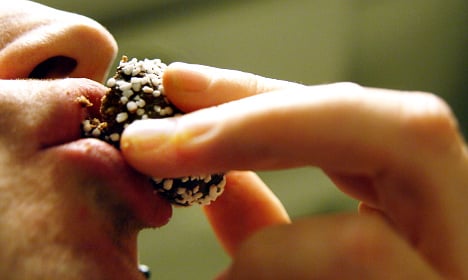Not only did Albin and Elina Ahlman hand-roll a football-sized version of the classic Swedish treat, they also kept their guests sugared up to the eyeballs with 2,000 smaller balls.
Actually, Albin could only supervise the preparations after breaking a wrist bone a month before the wedding, but friends were happy to help Elina prepare a mixture loaded with 13 kilos of butter.
Only Albin’s grandmother bemoaned the lack of a traditional wedding cake. Everyone else just got stuck in.
“A wedding cake is really expensive and it's rarely good enough to justify the price,” he told local newspaper Skaraborgs Läns Tidning.
“This way no one needed to worry about getting seconds, they could have as much as they wanted.”
The 170 wedding guests left sated, and the next day the happy couple welcomed well-wishers to their home for more.
The two-day feast put a dent in the reserves, but the Ahlmans still had 300-400 chocolate balls left over.
“The day after the wedding I ate a regular breakfast, then I just ate chocolate balls all day, because I can! I never tire of it,” Albin Ahlman told the newspaper.



 Please whitelist us to continue reading.
Please whitelist us to continue reading.